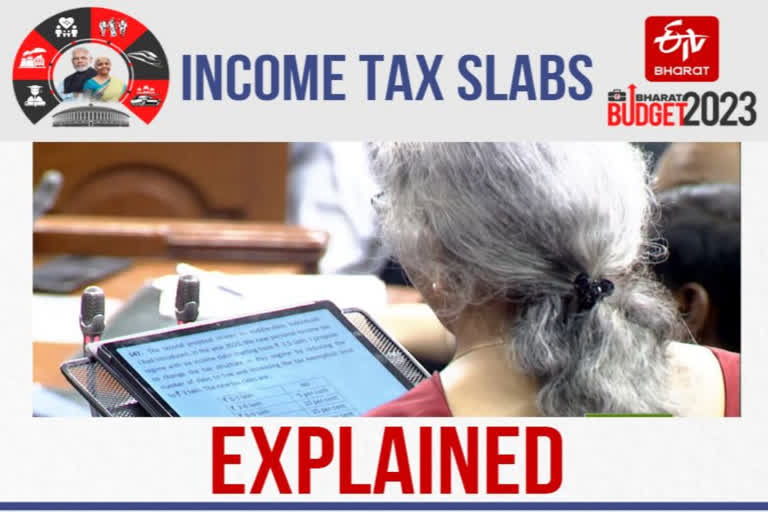Hyderabad: In an apparently populist budget, Union Finance Minister Nirmala Sithrama, in her last full-fledged budget before the crucial Parliamentary election 2024, has showered her bounty to the taxpayers of the country.
Giving encouragement to the ‘New Tax Regime’, the finance minister said that the people with an annual income of 7 lakhs or less will have no tax liability. From a layman’s parlance, the enhancement of this limit to 7 lakh rupees from 5 lakh means that the person whose income is less than Rs 7 lakhs need not invest anything to claim exemptions and the entire income would be tax-free, irrespective of the quantum of investment made by such an individual.
The proposal will give the much necessary boost to the consumer market which will in a way help the economy to grow. Alternatively, this will result in giving more consumption power to the middle-class income group as they could spend the entire amount of income without bothering too much about investment schemes to take the benefit of exemptions.
What is Old Tax Regime and New Tax Regime?
Budget 2020 introduced a new personal income tax regime for individual taxpayers with lower tax rates but more tax slabs. Also, it removed all available deductions and exemptions. The Finance Minister gave tax payers an option to choose between the new regime and the old one, which in fact made the whole process seem complex.
India's gross savings rate was approximately 30% in March 2019 and domestic savings was a significant contributor to the overall rate. This was because, the old income tax regime helped promote savings for any future eventuality
The new regime offers reduced tax rates and compliances. Also, as most of the exemptions and deductions are not available, tax filing becomes simpler as there is lesser documentation required. However, the option for this concessional tax regime came with a cost -- it required the taxpayer to forgo certain specified deductions.
A salaried person currently has the choice to choose the old tax system and keep using the standard tax deductions and exemptions. Otherwise, he or she might choose the new, more favourable income tax system, which does not offer any typical tax breaks or exemptions. The person will have to forego 70 tax deductions and exemptions under the new tax law, such as the HRA tax deduction, LTA tax deduction, Section 80C deduction of up to Rs. 1.5 lakh, and so on.
More bounty from the Finance Minister
The Finance Minister's second proposal relates to all middle-class individuals where six income slabs starting form 2.5 lakh was introduced in 2020 as a part of the new tax regime. The finance minister proposed to reduce the number of slabs to five and increase the tax exemption limit to Rs 3 lakh. The income tax slabs under the new regime in FY 2023-24 are as follows:
₹0-3L: 0% tax rate
₹3-6L: 5% tax rate
₹6-9L: 10% tax rate
₹9-12L: 15% tax rate
₹12-15₹: 20% tax rate
Above ₹15L: 30% tax rate
Explaining the newly introduced tax slabs during her speech, the Finance Minister said these will provide major relief to all taxpayers in the new regime. "An individual with an annual income of Rs 9 lakh will be required to pay only Rs 45,000. This is only 5 per cent of his or her income. It is a reduction of 25 per cent on what he or she is required to pay now, which is Rs 60,000. Similarly, an individual with an income of Rs 15 lakh would be required to pay only 1.5 lakh or 10 percent of his or her income, a reduction of 20 per cent from the existing liability of Rs 1,87,500," the FM explained.
Leave Encashment
The Finance Minister also proposed to hike tax exemption on leave encashment on retirement of non-government salaried employees to 25 lakhs from 3 lakhs. Leave encashment is the money received in exchange for a period of leaves which was not availed by the employee. This is taxable based on when it is received.
Highest Tax reduced
Interestingly enough the Finance Minister also reduced the highest tax from 4.7 percent to 39 percent. Mentioning it to be the highest tax rate in the world, the finance minister said that the rate has been reduced from 37 percent to 25 percent which in a way will bring down the maximum tax rate.
Income tax changes cost to Government
The income tax changes rolled out by the government will cost 35,000 crores. The government will have to forgo 37000 cores as direct tax and another 1000 crores as indirect tax. However, the government will earn an additional 3000 crores from the new tax arrangement and so there will be a total deficit of 35000 crores.



